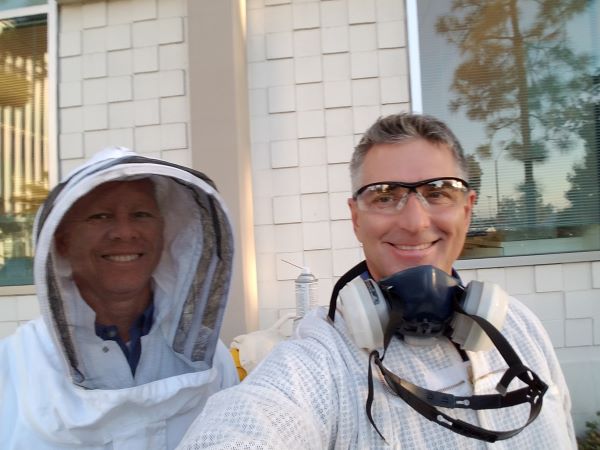Stinging Pests
Stinging Pests
Get the Janus Advantage Over bees, wasps & yellow jackets
The Removal of Stinging Pests: Protecting People and Pets
The removal of stinging pests should be considered whenever people or pets are at risk. Bees, wasps, and yellow jackets can sting without provocation, posing significant risks.
Know the Risks of Stinging Pests
- Emergency Room Visits: Stinging insects send more than 500,000 people to the emergency room each year.
- Allergic Reactions: Nearly 2% of people are highly allergic to stings and may experience a severe reaction (anaphylaxis) that requires immediate medical attention.
- Threat Detection: Some stinging pests, like Africanized honeybees, can sense a threat from 50–100 feet away from their hive.
- Aggressive Behavior: Yellow jackets can react more quickly and in larger numbers, making them especially dangerous.
Fast Relief from Stinging Pests
Bothered by Stinging Pests?
Keep Pests Away—Call the Pros at Janus Pest Management Today!

Jay and Victor (the Bee Evictor) in action—Pasadena
ProTip: What to do if you’ve been stung...
More Info
Practical Tips to Reduce Discomfort from Bee Stings:
-
Remove the stinger quickly to limit venom release.
-
Clean the affected area thoroughly with soap and cold water, then apply a cold compress or ice pack.
-
Over-the-counter NSAIDs (like Aspirin, Ibuprofen, or Naproxen) can help relieve pain.
-
Antihistamines and hydrocortisone ointment may soothe the local reaction.
-
If the reaction worsens, see a doctor for prescription oral steroids or antihistamines.
-
For serious reactions, seek emergency medical help or call 911. Those with known insect allergies should carry and know how to use epinephrine kits at all times. —NPMA
NOTE: Don’t take medical advice from a random online blurb—it’s probably no better than your friend’s cousin’s blog. Call your physician or dial 911 if you’re in doubt. Now—back to our regular programming…
Here to Help
Click to Schedule an Inspection or Service Appointment Today! Or Call Now: (888) Janus-44

